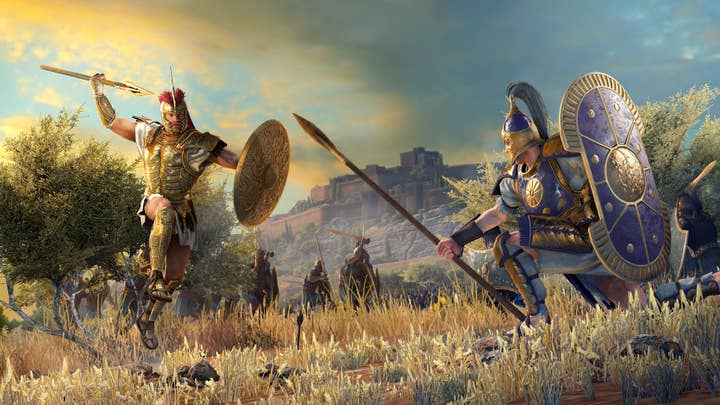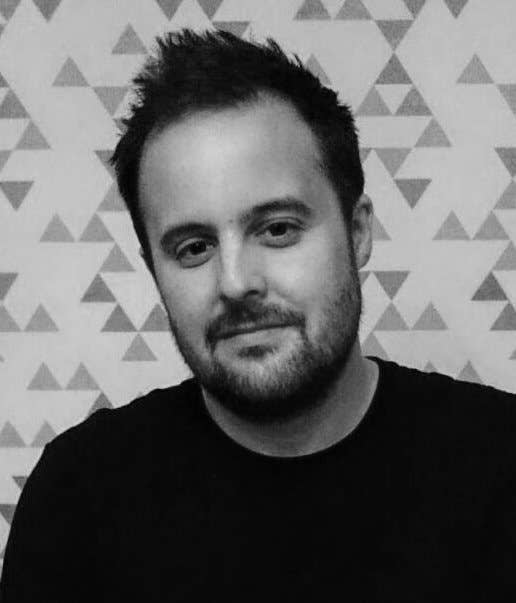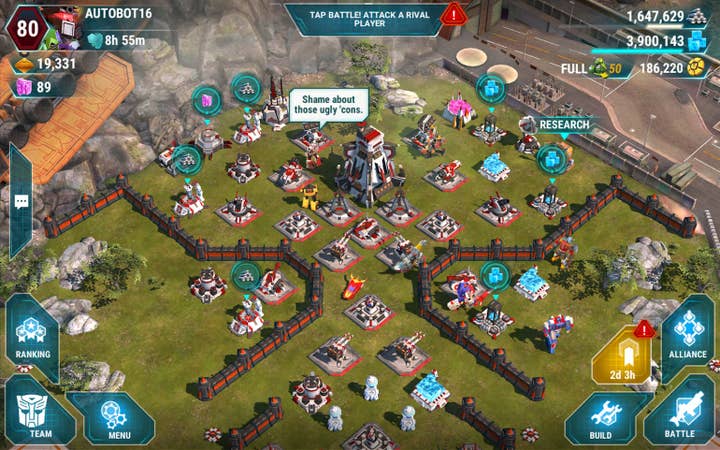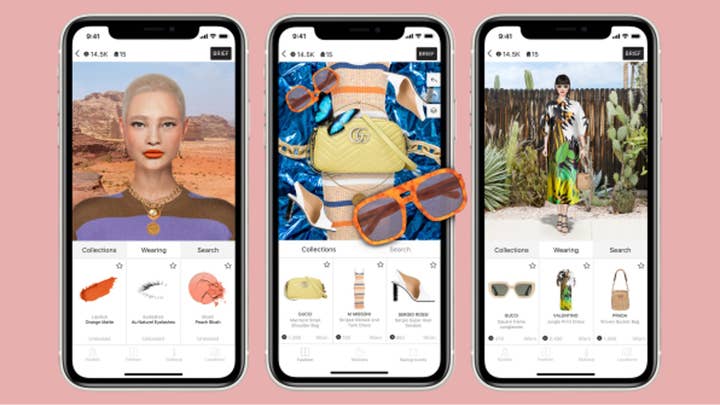How to get a job as a game UX designer
The GamesIndustry.biz Academy explores the routes into an essential but often misunderstood field in the games industry: UX design
Our guides can help you to find the right path to the games industry job of your dreams. You can read our other in-depth guides on how to get a job in the games industry on this page, covering various areas of expertise.
Despite emerging in the games industry since the beginning of the previous decade, with origins in web design and primarily mobile gaming, the role of user experience (UX) design in games can still be confused or absent from a development team, and varies wildly from studio to studio.
Some developers might have a role or team wholly dedicated to this area, others may have the role sit between design or art teams, or UX can also be rolled in with the design of the user interface (UI), even though the two are not the same.
But while UI design is concerned with what can be seen on screen, such as menus, buttons or HUD, UX design encompasses the whole player experience.
"I always see it as a glue job, someone who sits between all the departments making a game to get the best experience for the user"Caitlin Goodale
"UX deals with how we teach the player, onboard them in a game, how we present them the various systems and their interaction with them," says Alex Tokmakchiev, lead UI/UX game designer at Creative Assembly Sofia.
As this can cover other elements, including audio cues, level design, and controller inputs, Caitlin Goodale, head of UX design for luxury styling game Drest sums up the job succinctly: "I always see it as a glue job, someone who sits between all the different departments making a game to try and get the best experience for the user at the end of the day."
We asked Tokmakchiev, Goodale and two other game UX specialists how one can get into the games industry in this important role.
- What education do I need to get a job as a game UX designer?
- What experience do I need to get a job in game UX design?
- What qualities and skills do I need to be a game UX designer?
- What are the common misconceptions about game UX design?
- What are the career progression opportunities of a game UX designer?
- Advice and resources for new and aspiring game UX designers
What education do I need to get a job as a game UX designer?
Although you can find both short and long courses in UX (Human-Computer Interaction is also a relevant field in Computer Science), all of our interviewees agreed that there are no hard formal qualifications required to get into UX. For Tokmakchiev, who graduated in 2011 in Computer Graphic Design, those courses also didn't exist when he was starting out.
Nonetheless, for those who can afford it and want to go down the traditional educational path, there are subjects you can choose to study that will give you a solid background to be equipped for UX design.
"I studied Psychology at university as a BSc rather than a BA," says Nida Ahmad, who had already been working in game UX while studying for her degree and is now a UX designer at Netspeak Games. "I learned a lot about research methods and testing which was something I could apply over to game development -- how do you run a playtest, how do you analyse data accurately and garner statistical significance? But then there's also social psychology, so I learned a lot about how the brain works, how people work."

Given its links with UI, the other interviewees actually graduated with degrees in graphic design, including Adam Sullivan, co-founder of Pocket Burger Games. Prior to this, he had spent over a decade in both UI and UX, specifically as the founding UI/UX designer at mobile game studio Space Ape Games.
"A strong graphic design background will definitely help if you're looking to go towards a UI route. But in terms of UX, any kind of design will give you the right kind of problem solving chops," he says. "If you're a designer, you understand it's a process that you go through, as opposed to having a very specific set of skills."
While Goodale graduated in Computer Arts, which included modules in UI and UX, she agrees there are other ways to learn UX, adding that about half the people she has hired do not have degrees, let alone UX-specific ones.
"There's so much education online, and it's in a lot of ways more of a mindset and a specific set of tools than what needs to be taught in a university education," she says.
Although designed primarily for web and tech sectors, 12-week UX short courses or bootcamps, such as ones run by Interaction Design Foundation, Generally Assembly, or Hyper Island, can be beneficial for some people as it will usually result in an applicable real-world prototype that can go in your portfolio.
Goodale however adds these courses do need to be supplemented with other evidence.
"As a hiring manager, you see a lot of people coming out of these courses with very similar portfolios and a very similar skill set, so I would need to see specific games interests," she explains. "One of the great things about the games industry is we have so many online communities on Slack and Discord that are teaching and sharing those UX skill sets."

What experience do I need to get a job in game UX design?
Getting that first job in UX design, which can either be an intern or junior UX position, is as tricky as any first job that requires experience. But it doesn't mean you need experience in a job in order for that experience to count.
As mentioned previously, your portfolio is the most vital part of why you'll get hired by a studio, and there are many ways to build that portfolio.
"If you have the free time, with game jams and group projects, you can go and work in a team and practice being a UX designer without necessarily working in a professional job," says Goodale.
Ahmad concurs: "If you don't have any experience, you can go to game jams and provide UX/UI support there. Even in a two-day game jam, you can produce some good screens or you can talk about how you helped the design process of the game design. It's more about, can you show your thought process? When building a good UX portfolio, look at things like system designer portfolios and game designer portfolios which can serve as really good inspiration around how to show how you think about things."

It's also possible to transfer over to game UX if you're already in a UX role or even web design, as the skills involved are very transferable. Nonetheless, demonstrating an interest in games is paramount, not so much whether you're a hardcore gamer, but whether you have a deep understanding of how they work, which you might not have if you only come from a UX background.
"I didn't used to play games before I got into the industry, so I started a blog with posts breaking down the UX of games," Ahmad explains. "I took the initiative to break down their design and say: this is how it meets certain UX pillars and this is how it can improve."
It was actually Ahmad's blog that led to the CEO of her current employer Netspeak Games to reach out to her on Twitter. This led to her being invited to work on an in-house project as a junior before she was hired to a full-time position. She does clarify that this is more of an indie approach, whereas AAA studios would likely have more formal structures and policies.
Another way of demonstrating your thought processes in UX is to do redesigns of certain screens of existing games, although Tokmakchiev advises against this method.
"You don't really have all of the context behind why the current implementation is what it is, so you might end up coming up with a solution that's not attainable or valid, which might end up badly for you," he explains.
"Prototyping in your portfolio is a plus, and will help you land a job. Not having a portfolio, you're not going to land a job"Alex Tokmakchiev
"What you can do differently is think of a way to actually add a feature or an experience on top of it. That way, you're building something new on top of an existing base, and that allows you to work within the constraints of the system, which is usually what we have to do as UX designers. You get to showcase your process because you can say, 'This is the problem, this is the solution, I built this prototype, I tested it with these people, and this is how it might end up in the game'."
If you still haven't acquired experience, then some studios also test potential junior candidates.
"There's a few infamous tests that every hiring manager has seen from other studios," says Sullivan. "They're always useful because they're real world applications, and that's really important."
Ultimately, everyone stresses and repeats the importance of your portfolio -- clear examples that demonstrate your contribution to a project or your understanding are more important than flashy presentations.
"Prototyping in your portfolio is a plus, and will help you land a job. Not having a portfolio, you're not going to land a job," says Tokmakchiev.

What qualities and skills do I need to be a game UX designer?
A UX designer may not require hard skills like a programmer, or at least not ones that can't be learned on the job, but there are nonetheless some visualising skills that will greatly help you do your job.
These tools feed back into a range of soft skills, the most important being a people person.

- 1. Interpersonal skills
"Being a people person doesn't mean you have to be an extrovert, but you need to be really good at working with people and negotiating difficult situations," Goodale says. "Very often you have to be the mediator between different teams. Then you actually have to have those difficult conversations to find the best outcome for the player."
While that means that it's necessary to be able to collaborate with others, Sullivan adds that there's also an element of salesmanship and leadership in the role, even as a junior.
"You need to be confident about your ideas and your solutions and you need to sell them to the team," he says. "You might need to convince people to do the harder thing but which is the best thing for your players, so it's worth spending the time on it because it will make a better product."
On the flipside, being a good listener is equally important in communication.
"When you conduct user tests, you're not the active one, it's the person that's being tested, so you need to be a very good active listener in order to see where stuff is headed and what problems the player is currently facing," says Tokmakchiev.
- 2. Prototyping and visual tools
A lot of UX design will involve communicating to the team with wireframe models and prototypes, so being proficient with prototyping tools like Figma is incredibly valuable for UX designers.
"You don't need to know it at an expert level but you need to know it well, at least when you're starting off, so that you can produce things," says Ahmad.
"It doesn't have to be beautiful, but being able to convey your ideas in sketch format can really bring the whole team on board with what you're doing"Caitlin Goodale
As some roles combine UX and UI, a good sense of visual design is also useful, although you're not expected to create something beautiful (that job will go to the UI artist).
Having a visual design background, Goodale says: "Sometimes figuring out the solution forward is being able to mock something up really quickly. It doesn't have to be beautiful, but being able to convey your ideas in sketch format can really bring the whole team on board with what you're doing."
So while being able to simply sketch something on paper is useful, it's highly beneficial to have knowledge of tools like Sketch, Azure, and Adobe XD. Ahmad adds: "For some tools, you can get a personal licence totally free. So this is the sort of thing that you can build up yourself without having to pay for it and have that investment."
- 3. Empathy
By far the most important quality everyone agreed on is that you can't be a UX designer without having empathy for your players.
"Can you put yourself in someone else's boots and be like, how is this going to work? And how can I make people understand this?" says Sullivan. "That's the best skill you can have as a UX designer."
Tokmakchiev adds: "You're an advocate for the player inside a game dev team. You need to defend their interests and make the game accessible, approachable and understandable. If you can't empathise why someone with low vision isn't going to have a good time when the subtitle size is 24 pixels and they don't have the option to increase that when they sit on the sofa two metres away, then you're not designing for players."
Empathy can apply not only to the player but also the rest of the team, such as understanding where a game designer is coming from when they have a design intent for the player.
"With that comes being a very good communicator and being a very good listener," continues Ahmad.

What are the common misconceptions about game UX design?
As we previously touched upon, many game UX roles tend to be combined with UI, so it's perhaps not a surprise that the two can often be conflated, to which Tokmakchiev adamantly says: "UX is not UI!"
"A lot of people think that it's just about buttons, when UX doesn't just involve a single role but practices and policies in the studio as a whole, which is referred to as UX maturity" adds Sullivan. "Since this varies from studio to studio, it's no wonder that there are confusions of the role of UX design in the industry, let alone for those looking to get into it."
"You're an advocate for the player inside a game dev team. You need to defend their interests and make the game accessible, approachable and understandable"Alex Tokmakchiev
As UX also involves user testing, another misconception is that it's related to quality assurance (QA). But again, their functions are quite different.
"My job is to ensure that [the studio's] vision is portrayed as accurately as possible towards the player, whereas QA is much more about 'Is this thing broken or not?'," says Ahmad.
Nonetheless, Goodale has mentored people who have come to UX from a QA background.
"In QA, you're picking apart those specific issues that an eventual player might have, so that [role] can actually build a really strong understanding of UX design," she says. "It can be a really strong way to actually improve your game development pipelines, if your UX team is closely tied to your QA team."
Despite the importance of UX in focusing on the player, there is also a misconception on what value it brings to a development team. This is particularly prevalent because, in the past, the role was either part of the game designer or UI designer's job, with some studios still not having an explicit UX position internally.
As a UX designer, Ahmad isn't just prototyping or conducting playtests at Netspeak. It's often about educating the team with workshops and discussions around different features of a game.
"Because the output and the deliverables you have aren't really a build or a piece of artwork, it can seem like UX is not of much value because it's not visible directly," she explains. "So something I always recommend UX people should do is track the work that you do and the impact and the value it has had for the team so that you can showcase that to other people."
What are the career progression opportunities of a game UX designer?
As head of UX for Drest, Goodale still gets hands-on with UX design as she says it's "the sort of designer [she is]." She admits it's not as frequent as she used to, as she essentially has a managerial role overseeing the work of other UX designers, as well as a few non-UX staff.
A typical UX design career can see you progressing from junior to mid-level to senior before heading up the management route. However, other career paths also exist for people who don't necessarily want to be managing people, such as going down the independent path as an individual contributor (IC), in a lead or principal role.
"As principal UX designer, you are a very high level expert, so you might end up working on hugely specific or very difficult problems that a regular or a senior just might not be able to," Tokmakchiev elaborates.
"UX people should track the work [they] do and the impact and the value it has had for the team so that [they] can showcase that to other people"Nida Ahmad
Because UX does have crossover and collaboration with other disciplines, it's also possible for a UX designer to go down another path such as a game designer, project director, or art director.
"I think UI/UX designs are very well placed to be able to sort of take any of those routes depending on where their personal strengths are and the organisation they're in," says Sullivan. "I was encouraged at Space Ape to flex my entrepreneurial muscle and that's how I ended up co-founding my own studio."
His only warning is that people shouldn't think of UI/UX as a stepping stone.
"I've seen a lot of portfolios where there's a bunch of concept art and then they draw some buttons on top, and they're thinking, 'If I do UI/UX, they can see what a great concept artist I am'. That's not the way to do it -- this is a dedicated role and plays a very important role in game development."

Advice and resources for new and aspiring game UX designers
- Play and analyse other games
Considering it helped get her current job, Ahmad believes budding game UX designers should be not only playing games but know how to share their thoughts on them. There are all kinds of ways to do this whether it's a blog, through social media, or joining an online community.
"If you play a game for even five minutes, you can tweet about some UX things, and through that you build credibility and more people will look at your work and what you do," she says. "Follow people on Twitter with the discipline that you want to be in and follow the tweets on the field."

Tokmakachiev adds: "Unlike other UX, games are supposed to create a specific sense, atmosphere or vibe. You want them to feel as if they're, for example, this lone warrior facing harshness and struggle, or you want to create a feeling of discovery that makes the player smarter. This is something that you don't do in the UX of other software. If you're not playing other games, you're not going to get a sense of it, which means you're going to be more limited when designing UX for games."
He does however recommend aspiring game UX designers look to other areas outside of games as well such as e-commerce websites or mobile apps.
"I actively encourage my team to look at how a particular problem may have been fixed outside of games. Because usually outside of games, they tend to think a lot more about ease of use than we do in games."
- Portfolio, portfolio, portfolio
We may have already covered it under education and experience, but again, our interviewees cannot stress enough how important your portfolio is and that it's something that you should continue building in order to secure a career in game UX design.
"Make sure it's accessible to everybody on your LinkedIn, on your website or Twitter," says Sullivan. "If you end up having a conversation with someone in the industry, make sure they can easily find your portfolio and make sure it's got your name in big letters and an easy way to contact you. You live and die by your portfolio."
"You can build a strong portfolio by going to game jams, by revising existing games and breaking them down from a UX perspective, and if you're interested in the UI side of things, maybe redo some screens as concepts," Ahmad adds.
- Get into prototyping early
Finally, Goodale recommends to get into prototyping as quickly as possible.
"I actively encourage my team to look at how a particular problem may have been fixed outside of games. Because they tend to think a lot more about ease of use than we do in games"Alex Tokmakchiev
"It's not as terrifying as it sounds, especially with some of the tools that we have these days," she says. "It's literally drag and drop. And it's so much better to test something really early."
Because of the associations with UI and visual design, juniors can also have a desire to make something as perfectly presentable.
"That's never ever how it works in a games team," she continues. "As soon as you actually get on whatever device that you're trying to build for, you will immediately start to recognise the stuff that you need to fix. So make hacky prototypes, whether it's on paper or in an engine, because the earlier you start doing that, the better your designs will be. If you start doing that as a designer early on, you'll get very confident in those skills that are more difficult to build."
- Resources
Here are the resources our interviewees recommended to newcomers for getting into UX design, with books not only covering game UX but the broad principles of design.
-BOOKS
- "The Gamer's Brain: How Neuroscience and UX can Impact Video Game Design" by Celia Holdent
- "The Laws of UX" by Jon Yablonski
- "Universal Principles of Design" by William Lidwell
- "Design is a Job" by Mike Monteiero
- "The Design of Everyday things" by Don Norman
- "Don't Make Me Think" by Steve Kreug
-ONLINE RESOURCES
- We Can Fix It In UI, a global Discord community dedicated to UI and UX in the games industry
- Games UI Database, massive reference tool with nearly 40,000 screenshots of UI for over 900 games
- Interaction Design Foundation offers good remote UX bootcamps Nida Ahmad has written this post with an even more comprehensive list of resources for getting into game UX and also shared a Google Doc from UX designer Anna Brandberg with more advice for getting into the games industry, specifically UX design.
More GamesIndustry.biz Academy guides to Working in Games
Our guides to working in games cover various perspectives, from hiring to retention, to landing the job of your dream or creating the right company culture:
